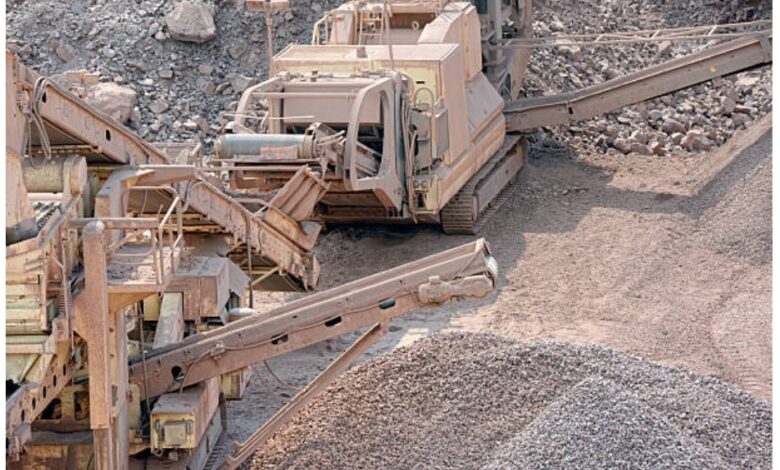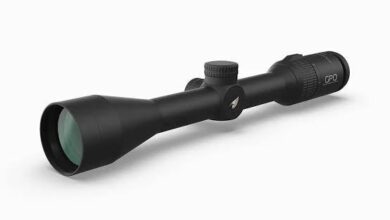Vibrating Screen Essentials: How to Improve Screening Efficiency

Therefore, vibrating screens are used widely, for example, in the mining industry, construction, recycling, and agricultural business. They are made for grouping, categorizing, and sifting material to enhance the processing unit’s operational functionality. However, in order to achieve the greatest effectiveness of the utilization of a vibrating screen, efficiency has to be optimized.
When selecting vibrating screen manufacturers, one has to perform preliminary work to find reliable manufacturers who offer high-quality equipment for purchase. In this article, the reader will get an understanding of how the vibrating screens function, what influences their effectiveness, and the recommendations that can be made to increase the efficiency of the vibrating screens.
Understanding the Basics of Vibrating Screens
A vibrating screen works on the principle of vibrating the material that is passed on this screen in a vein-like manner. The screen divides material particles depending on the size, so the material which passes through the mesh is of the right size, and the gross material will be processed again. Vibrating screens find application in industries that need to classify materials; such industries include mining, where vibrating screens separate ores; recycling, where they sort waste materials; and construction, where they are used to separate aggregates.
There are many types of modern vibrating screens, which are circular, linear, and elliptical motion screens, and all of them have various uses. Their performance is more influenced by the type of screen used, size of mesh, vibration frequency and amplitude. Selecting the appropriate vibrating screens for an application and then procuring the screens from quality vibrating screen suppliers makes a lot of difference regarding the productivity and effectiveness of screening activities for operational needs.
In addition, if vibrating screens offer better features such as energy-efficient motors and varying settings possibilities, the screens will provide much higher efficiency, lower operating costs and better material quality, making them a highly valuable investment in any production line.
Influences that Affect the Efficiency of Screening
The efficiency of a vibrating screen depends on the following factors that operators have to consider when using the equipment. The nature of the material that is being processed is one of the most important factors for consideration. These materials are normally characterized by different sizes, shapes, and moisture content, which, in some instances, will call for a certain style of screen or certain screen arrangement.
A few of the other factors that complicated the phenomenon include the mesh size and the screen deck design. Types of separators with big mesh openings process material quickly but less accurately, while the more exact mesh openings process materials accurately but less quickly. The vibration frequency and amplitude have to be matched to the material and its use as well. If the screen shakes too fast or too slowly, it causes setPageEfficiency to decrease and setPageWear to be higher.
Regular servicing is the other big contributing factor to increased efficiency. Vibrating screens are, as a rule, subject to extensive wear and tear, which is why the equipment must be inspected regularly and necessary repairs conducted on time to avoid a breakdown.
Only through purchasing vibrating screen equipment from well-established vibrating screen manufacturers can you get hold of good quality vibrating screens that will last long and perform at great efficiency. Moreover, novelties such as regulating screen positions and self-cleaning mesh systems help control the screening outcome and increase overall efficiency.
Measures to Increase the Efficiency of a Vibrating Screen
Optimizing vibrating screens can enhance organisational production rate, cut organizational costs, and enhance material quality. Different applications require the use of different screen meshes or media; aspects such as the type of material, size and moisture content of the materials can affect the screen’s performance. Changing the vibration frequency and amplitude in accordance with the material and screening demands would enhance material circulation, decrease the tendency to clog and increase productive capacity.
It should also be noted that proper installation is just as crucial since a misaligned or unstable base can have a very negative impact on performance and smoothness and greatly increase wear. It decreases the risk of wear and tear or the possibility of loose bolts or damage to the screen media so that they are conspicuous and rectified, hence enhancing efficiency.
Selecting original vibrating screen providers ensures the availability of robust machines created with both sturdiness and efficiency, which provide an improved return on investment in the operations. Furthermore, it would be possible to establish computerized control and monitoring systems for performance indicators that would be useful for optimization or to avoid future problems.
Benefits of Working with Trusted Vibrating Screen Manufacturers
Thus, when selecting a vibrating screen, buying from recognized vibrating screen manufacturers guarantees you genuine equipment that will be durable. The well-known manufacturers add high-quality elements such as energy-saving motors, optional vibration modes, and more durable materials to our screens to ensure high efficiency in harsh environments.
Apart from quality products that mainly focus on the optimized performance of their vibrating screen and its corresponding accessories, competent and effective manufacturers also provide after-sales services such as spare parts, maintenance services, and technical support throughout the lifespan of the vibrating screen. In addition, specialized manufacturers can opt for customization; the equipment that is used for screening meets your precise needs.
Manufacturers know how to help manage processes and minimize downtime because you are using experts, and your investment will be protected by reliable support. In addition, many of these manufacturers allocate capital to their research and development departments so that their equipment incorporates the newest technology available and gives operators the tools to overcome problems such as clogging and uneven material fill.
Conclusion
Today, vibrating screens are vital equipment in industries that need keen and accurate separation and sorting of material. Learning how these machines operate, the conditions that influence their efficiency, and ways to enhance these factors enable you to improve the results you get from operations. Whether involved in minerals processing, aggregates or waste materials processing, getting your vibrating screen from reputable vibrating screen manufacturers guarantees you get the best product that is reliable and efficient.
A proper vibrating screen selection and a correct maintenance program can lead to substantial improvements in productivity, cost reduction and material quality. As you choose your manufacturers and implement the guidelines presented in this guide, you are on the right track to making your vibrating screen work at its best and giving you the lasting success every operation deserves. Moreover, outsourcing with established manufacturers adds value to efficiency, thereby protecting your operations from becoming routine in an ever-strategized world of industrial production.



